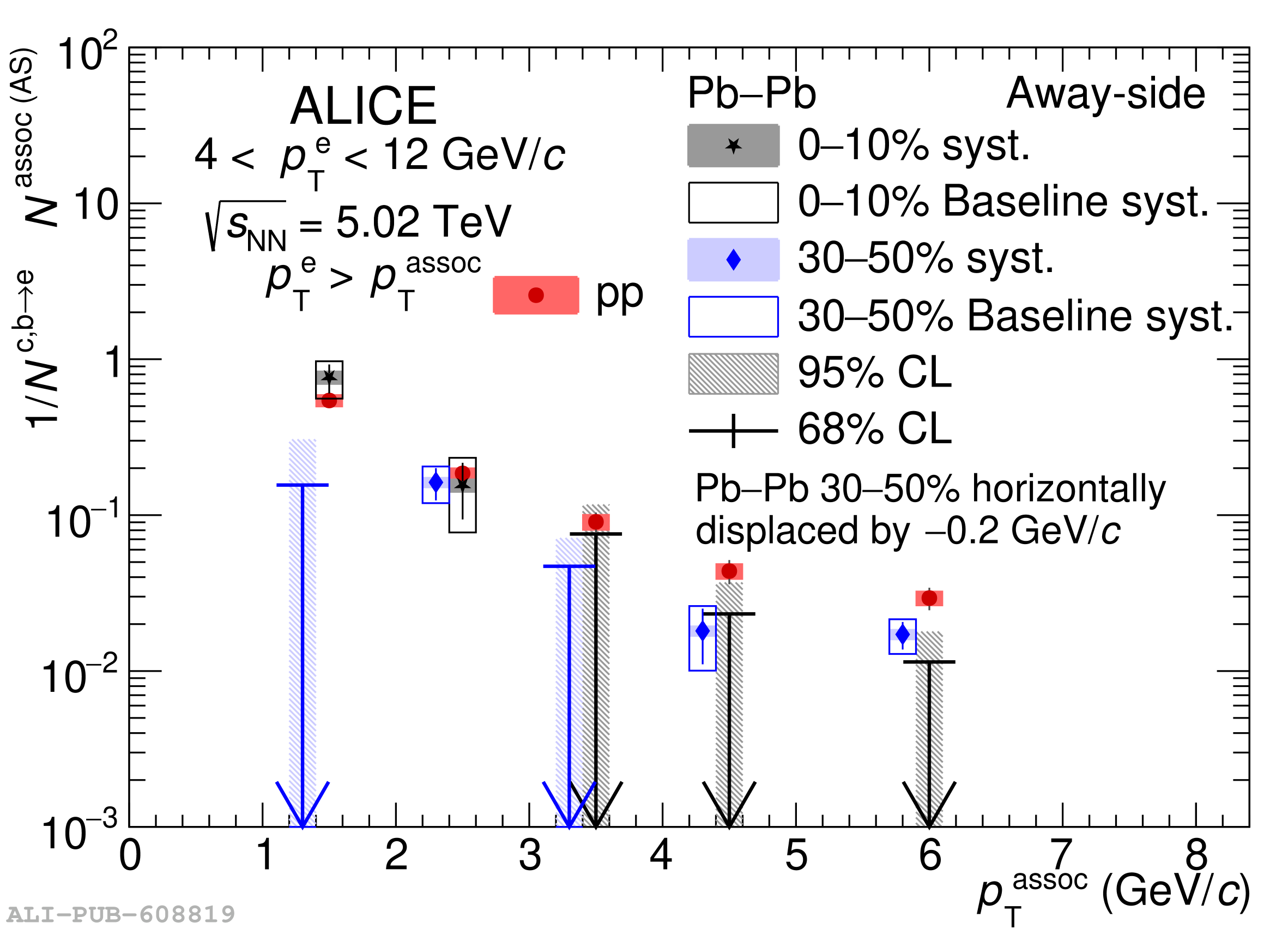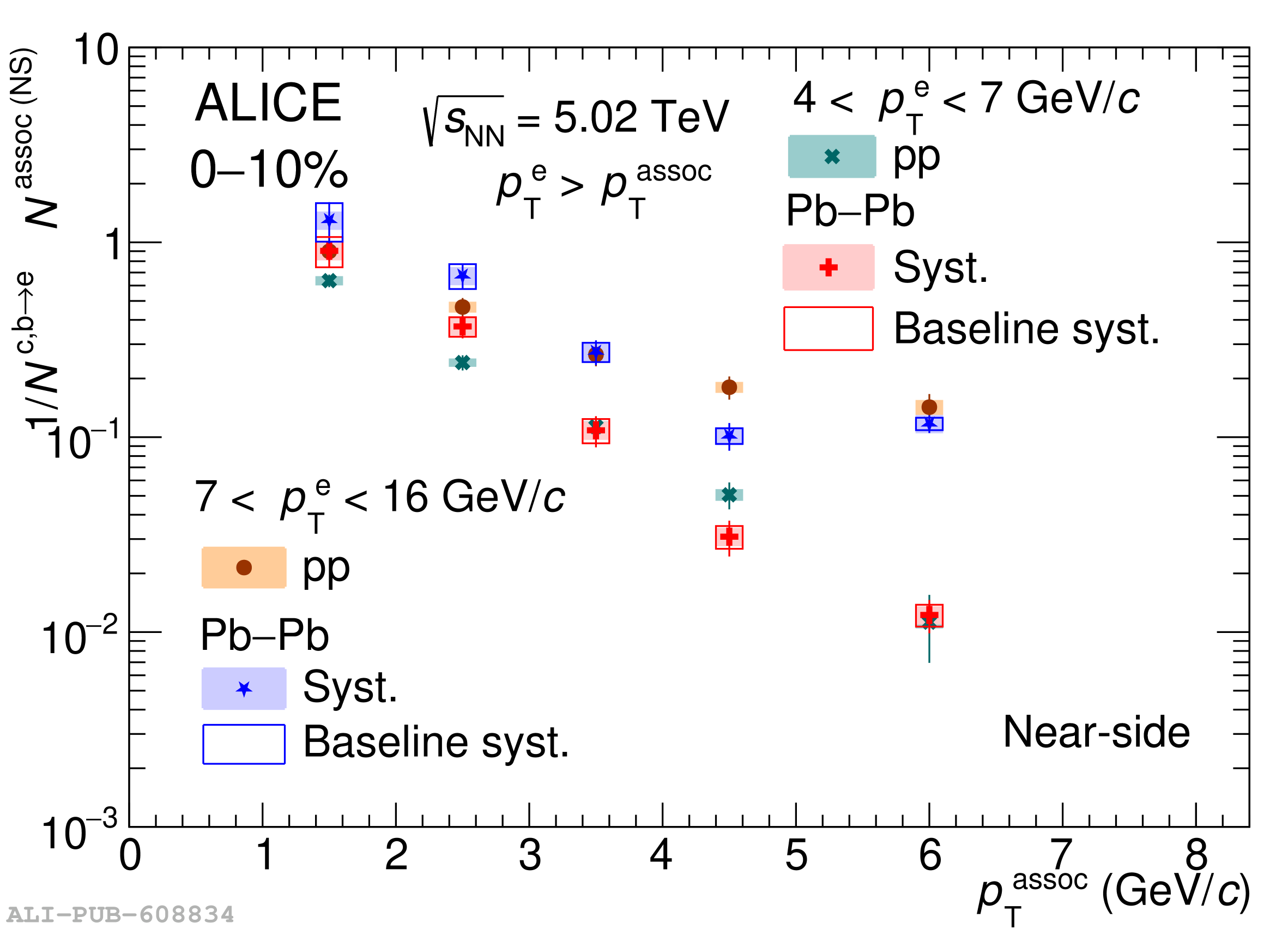The azimuthal-correlation distributions between electrons from the decays of heavy-flavor hadrons and associated charged particles in Pb-Pb collisions at $\sqrt{s_{\rm NN}} = 5.02$ TeV are reported for the 0-10% and 30-50% centrality classes. This is the first measurement to provide access to the azimuthal-correlation observables in the heavy-flavor sector in Pb-Pb collisions. The analysis is performed for trigger electrons from heavy-flavor hadron decays with transverse momentum $4 <~ p_{\rm T}^{\rm e} <~ 16$ GeV/$c$, considering associated particles within the transverse-momentum range $1 <~ p_{\rm T}^{\rm assoc} <~ 7$ GeV/$c$, and a pseudorapidity difference of $|\Delta\eta| <~ 1$ between the trigger electron and associated particles. The per-trigger nuclear modification factor ($I_{\rm AA}$) is calculated to compare the near- and away-side peak yields to those in pp collisions at $\sqrt{s} = 5.02$ TeV. In 0-10% central collisions, the $I_{\rm AA}$ indicates a hint of enhancement of associated-particle yields with $p_{\rm T} <~ 3$ GeV/$c$ on the near side, and a suppression of yields with $p_{\rm T} > 4$ GeV/$c$ on the away side. The $I_{\rm AA}$ for electron triggers from heavy-flavor hadron decays is compared with that for light-flavor and strange-particle triggers to investigate the dependence on different fragmentation processes and parton-medium dynamics, and is found to be the same within uncertainties.
Submitted to: EPJC
e-Print: arXiv:2507.13197 | PDF | inSPIRE
CERN-EP-2025-137
Figure group
















